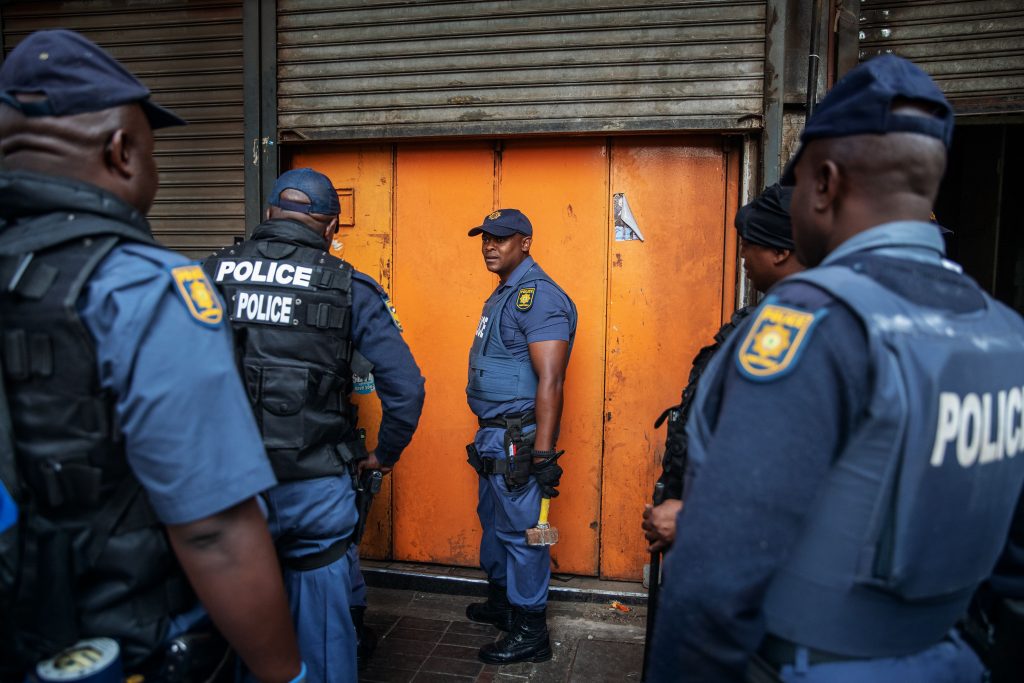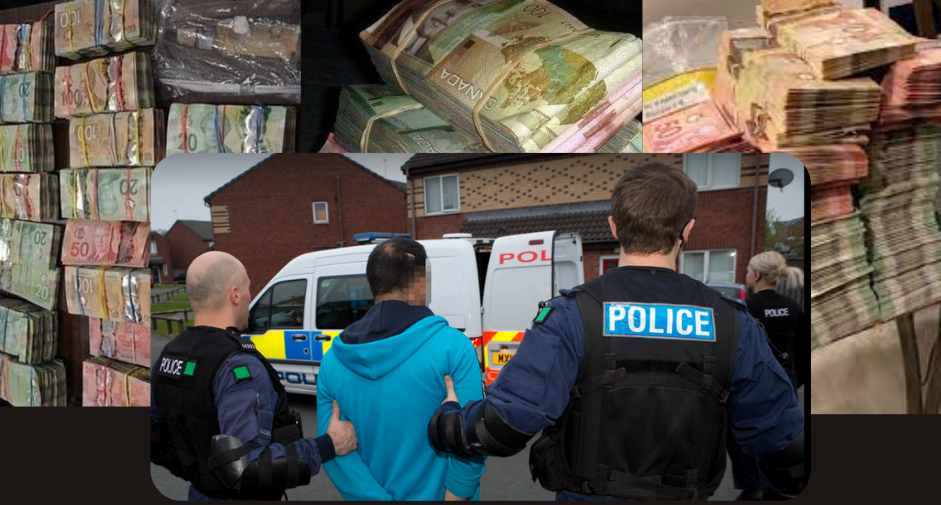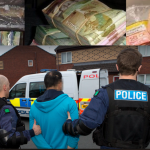Now Reading: Artificial Intelligence in Creative Industries: Challenges and Opportunities
-
01
Artificial Intelligence in Creative Industries: Challenges and Opportunities
Artificial Intelligence in Creative Industries: Challenges and Opportunities

Understanding the Impact of AI on Creative Fields: Changing the Landscape of Art, Design, and Entertainment
Artificial intelligence (AI) has been making waves across multiple sectors, but its influence on the creative industries is particularly fascinating. From painting and music composition to filmmaking and graphic design, AI is fundamentally transforming the way we create, experience, and share art. This shift isn’t just about automation; it’s opening entire new worlds of possibilities, expanding creative boundaries, and challenging long-held notions of originality and human touch.
One of the most visible ways AI impacts the arts is through algorithms that generate visual artworks. Artists and designers now use AI tools like DeepDream or generative adversarial networks (GANs) to craft stunning images or manipulate existing ones in ways that were previously impossible. These tools can produce anything from surreal landscapes to hyper-realistic portraits, enabling creators to experiment without the limits of traditional techniques or materials.
In the music industry, AI-based composition tools are evolving quickly. Programs like Amper Music and AIVA help composers generate melodies, harmonies, and even full-length tracks with minimal input. This not only accelerates the creative process but also allows musicians to explore styles and genres that might have been too complex or time-consuming to craft manually. As a result, musicians can focus more on refining their artistic expression rather than routine composition tasks.
The film and entertainment sectors are also leveraging AI to enhance storytelling. AI algorithms can generate script ideas, analyze viewer preferences for targeted content, or even create realistic CGI characters and scenes. For instance, deepfake technology can bring historical figures or deceased actors back to life on screen, creating compelling narratives that blend reality and fiction seamlessly. These advances have the potential to cut production costs and bring innovative creative visions to life more efficiently.
AI’s influence extends into the realm of writing. Virtual assistants like ChatGPT or GPT-based tools are aiding writers and journalists in brainstorming ideas, drafting articles, or editing content. While these tools don’t replace human writers, they serve as powerful companions that can spark inspiration, improve workflow, and even help overcome writer’s block. Content creators can thus produce more with less effort, and customize their output to suit specific audiences more easily.
Designers are also benefiting from AI-powered tools. For example, platforms like Adobe Sensei use AI to automate routine tasks like image tagging, color matching, or layout suggestions. This frees up creative professionals to focus on more complex and innovative aspects of their work, pushing the boundaries of visual storytelling. AI can also personalize design experiences for individual users, making campaigns more effective and engaging.
The concept of AI as a collaborator rather than just a tool is gaining traction. Some artists are openly embracing AI as a creative partner, co-creating artworks that blend human intuition with machine intelligence. This symbiosis can lead to entirely new art forms that challenge traditional notions of authorship and originality, sparking debates about what constitutes genuine creativity.
Despite these exciting opportunities, integrating AI into creative industries comes with significant challenges. One of the main concerns is ethical in nature. For instance, AI-generated art raises questions about copyright and intellectual property rights. Who owns an artwork created by an AI? Is it the programmer, the user who input the prompts, or the AI itself? Clarifying these legal issues is crucial as AI-generated content becomes more prevalent.
Another ethical dilemma involves authenticity. When AI can produce near-perfect art and music, consumers may struggle to distinguish human-made from machine-created works. This raises questions about the value of human effort and emotional depth in art. Would a song composed by AI carry the same emotional weight as one crafted by a human musician? Such questions challenge our understanding of artistic authenticity.
Job displacement is another concern associated with AI’s increasing role in creative fields. As AI tools automate repetitive or routine tasks, there’s a fear that certain roles—like graphic design assistants, some editing jobs, or background artists in filmmaking—might become obsolete. This potential shift prompts a need to rethink how creative professions evolve and adapt in the AI era.
The quality and originality of AI-generated content also spark debate. Since AI models learn from existing data, there’s a risk of reproducing biases or rehashing familiar styles. The novelty of AI-created works can sometimes be questioned: are they genuinely innovative, or just recombinations of what already exists? Understanding and mitigating these issues is key to fostering truly unique AI-driven art.
Moreover, there’s an ongoing discussion about transparency. Should creators disclose when a piece of art or music was produced with AI assistance? Transparency helps maintain trust with audiences and preserves the integrity of creative work. However, the lines can sometimes blur, especially when AI tools are deeply integrated into the creative process.
Education and skill development are also impacted by AI’s rise. Artists and designers need to learn new technical skills to work effectively with AI tools, which can be a barrier for some. Conversely, they also have an opportunity to expand their creative toolkit by mastering these innovative technologies. Investing in AI literacy is becoming essential for future-proofing careers in the arts.
On the business side, AI opens doors for new revenue streams. For example, AI-generated art can be sold as digital assets or NFTs (non-fungible tokens), allowing creators to monetize their machine-created works directly. This democratizes access to art creation and distribution, potentially empowering individual artists over traditional gatekeepers like galleries or publishers.
AI also enables more personalized entertainment experiences. Streaming platforms can analyze viewer preferences in real-time and recommend content tailored to individual tastes. AI-generated content can create customized music playlists or interactive storytelling experiences that respond dynamically to users’ inputs, making entertainment more immersive and engaging.
In addition, AI facilitates global collaboration in the creative industries. Artists from different parts of the world can combine their efforts seamlessly, sharing ideas and producing work that transcends geographical boundaries. AI-powered translation and communication tools further bridge cultural divides, fostering richer, more diverse creative ecosystems.
While these opportunities are promising, many creators worry about losing the human touch that makes art meaningful. Art is often appreciated because of the artist’s unique perspective, emotional authenticity, and cultural context. AI’s ability to mimic or generate from existing styles raises questions about whether machine-made art can truly replicate these deeply human qualities.
To address these concerns, some argue that AI should be viewed as a tool that complements human creativity rather than replacing it. The synergy between human intuition and machine intelligence can lead to new forms of artistic expression that were previously unthinkable. Embracing this partnership may unlock creative avenues that benefit both artists and audiences.
Another challenge relates to the reliance on data. AI models need vast amounts of training data, which can be difficult to acquire ethically and legally. Using copyrighted material without proper permissions to train AI raises additional legal and moral considerations. Ensuring respectful and fair data practices is vital as the technology evolves.
Content creators and industry stakeholders are also tasked with developing guidelines and standards for AI-generated art. Establishing best practices can help maintain artistic integrity, protect creators’ rights, and foster trust among consumers. Industry organizations are starting to develop frameworks for licensing and attribution related to AI-crafted works.
In the broader societal context, AI’s role in creative industries prompts us to reflect on what it means to be truly creative. Does the involvement of AI diminish the human element, or does it simply broaden our understanding of creativity? These philosophical questions are shaping discussions about the future of art in the digital age.
Furthermore, as AI tools become more accessible, individual creators and small studios can compete with larger productions more easily. This democratization lowers barriers to entry, allowing more diverse voices to contribute to the cultural landscape. It can lead to richer, more eclectic creative ecosystems worldwide.
However, the concentration of AI expertise and resources in the hands of big tech companies could lead to monopolization concerns. Ensuring equitable access and preventing misuse of AI tools is essential to promoting a fair and vibrant creative environment.
As AI continues to evolve, interdisciplinary collaboration becomes increasingly important. Artists, technologists, ethicists, and policymakers must work together to shape the responsible development and deployment of AI in the arts. Building a collaborative ecosystem helps maximize benefits while mitigating risks.
Educational institutions also play a vital role by integrating AI literacy into arts curricula. Equipping future artists with skills in AI can help them harness these tools responsibly and innovatively, fostering a new generation of technologically savvy creators.
Public perception and acceptance are also crucial factors. Some audiences may embrace AI-generated art wholeheartedly, while others may be skeptical or resistant. Ongoing conversations about authenticity, ethics, and value help build understanding and appreciation for AI’s role in creativity.
Legal frameworks worldwide are beginning to adapt to this emerging landscape. Countries are considering policies around AI-generated content, copyright, and licensing to clarify rights and responsibilities. Clear regulations can support sustainable and ethical growth of AI in creative industries.
Looking ahead, the integration of AI into creative fields will likely accelerate as technology advances. New algorithms, hardware, and data sources will enable even more sophisticated and versatile tools, giving creators unprecedented freedom to innovate.
At the same time, ensuring that AI enhances rather than undermines human creativity remains a central goal. Balancing technological progress with respect for human artistry requires ongoing dialogue, reflection, and ethical considerations.
Creative industries embracing AI have the potential to enrich cultural expression, democratize access, and foster innovation. However, this journey involves navigating complex challenges that demand thoughtful solutions and collaborative efforts.
In conclusion, AI is reshaping the creative industries in profound ways—offering exciting opportunities for innovation and democratization, while also posing ethical, legal, and social questions. The future of art, design, and entertainment in the age of AI will depend on how creators, industries, and societies address these challenges together, ensuring that technology serves to enhance human expression rather than diminish it.























